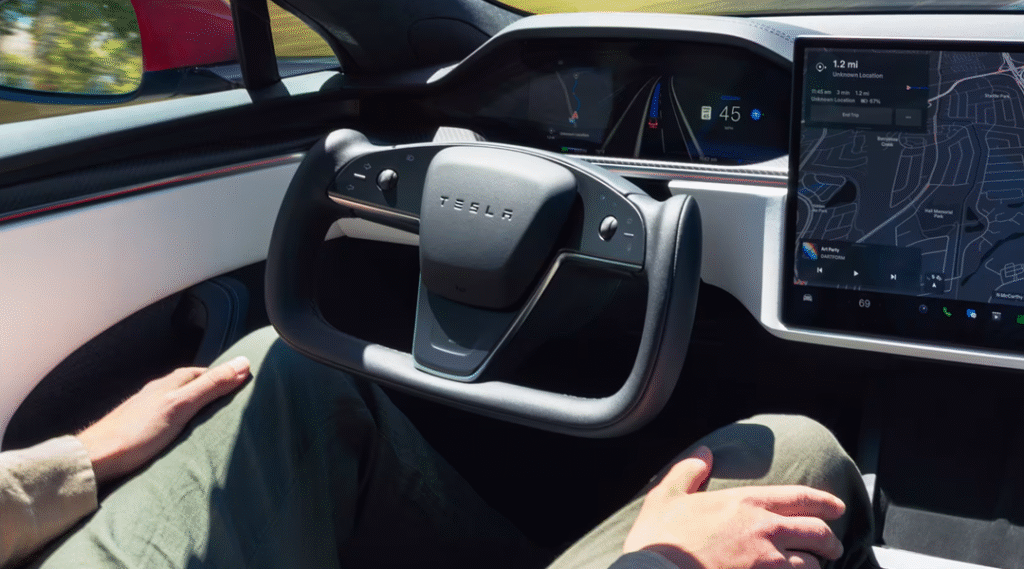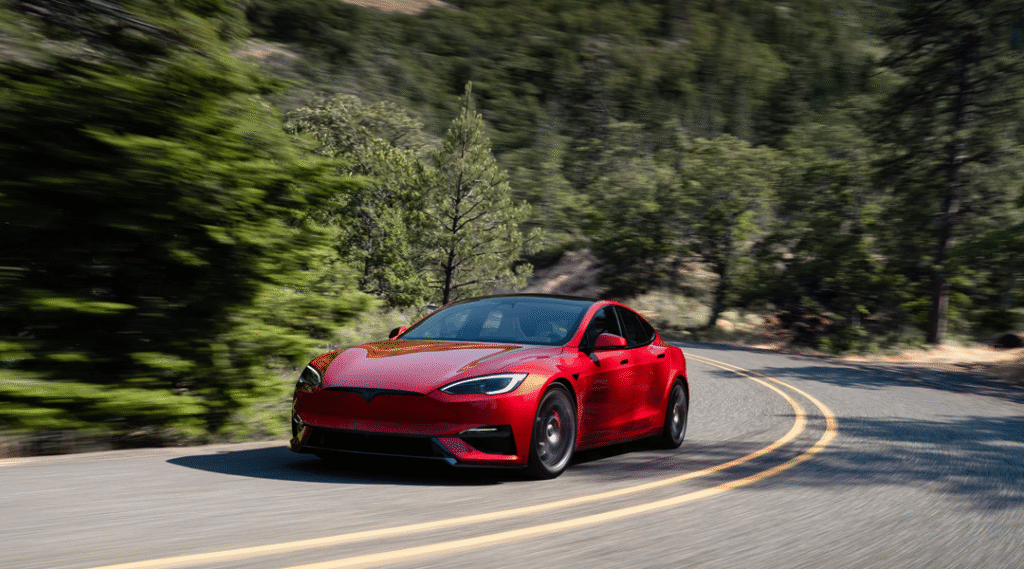The Tesla Model S has evolved from an electric halo into a boundary-pushing luxury performance sedan that mixes long-range practicality, sports-car speed, and a software-first ownership model. But how should it be categorized — a grand tourer, a tech-laden luxury cruiser, a super-sedan, or something uniquely Tesla? Below is a reframed analysis of the Model S’s character, strengths, limitations, and how it compares with its main rivals.
The essence: a long-range, tech-forward performance luxury sedan
Fundamentally, the Model S is a premium electric sedan focused on range, acceleration, and Tesla’s software capabilities. The non-Plaid versions offer class-leading range figures, while the Plaid trim delivers extreme straight-line performance. That duality — long-distance usability paired with sports-car quickness — is the Model S’s defining trait, separating it from many luxury alternatives that prioritize handcrafted materials or ride isolation over outright range and acceleration.
Tesla positions the Model S as its showcase platform for battery and drivetrain technology while offering everyday EV advantages like single-car long-trip capability and access to the Supercharger network.
Driving dynamics and technology
On the road, the Model S behaves like a high-speed grand tourer: instant torque, aggressive acceleration, and a low center of gravity that produce confident handling. Chassis tuning and steering lend it sporty character, especially in performance trims, while its range makes it practical for extended journeys. The ownership experience is dominated by Tesla’s software layer — large central displays, frequent over-the-air updates, and evolving driver-assist features that continue to change the car after purchase.
Interior and ownership experience — functional over ornamental
Tesla’s cabin design favors minimalism and tech functionality instead of traditional luxury craftsmanship. The emphasis is on displays and a modern user interface rather than ornate materials or bespoke finishes; buyers seeking leather, wood trim and artisanal detailing may prefer rivals that prioritize tactile luxury. Still, Tesla’s integrated navigation, charging-aware trip planning, and the convenience of an extensive fast-charging network deliver concrete day-to-day benefits.
Key advantages and downsides
Strengths: standout real-world range in many configurations, blistering acceleration in top trims, a mature software ecosystem with regular feature updates, and the convenience of Tesla’s charging infrastructure — all attractive to buyers who prioritize usable EV range and a tech-centric ownership model.
Drawbacks: premium Model S prices push it into territory where buyers often expect exceptional interior fit-and-finish and dealer-backed service. Tesla’s historical variability in panel gaps and the limited traditional dealer service model can be concerns for some buyers accustomed to established luxury brands’ ownership experience.

Competitors at a glance
- Porsche Taycan — Emphasizes track-like chassis dynamics and driver engagement; tends to offer shorter range but superior handling feel and a more traditionally luxurious interior for buyers who prioritize driving purity.
- Lucid Air — Competes strongly on efficiency and EPA range while offering roomy interiors and premium finishes; often positioned as a more traditionally luxurious EV alternative with very competitive range figures.
- Mercedes-Benz EQS — Represents the classic luxury flagship in electric form, focusing on comfort, isolation, and high-end materials rather than raw acceleration; appeals to buyers seeking a serene, opulent cabin.
- BMW i7 — Blends BMW’s handling heritage with full-size luxury packaging and dealer-backed service; positioned for buyers who want a balanced mix of refinement and driving dynamics.
- Audi e-tron GT — A performance-minded rival with strong build quality and premium finishes; typically trades some range for a more polished interior and brand cachet.
Who the Model S is best for
The Model S is best understood as a technology-first luxury performance grand tourer. It’s tailored to buyers who value long range, rapid acceleration, ongoing software improvements, and a charging network that simplifies long trips. It suits drivers who want a high-tech, high-performance sedan that remains practical for daily driving and extended travel.
If material refinement, ultra-luxury cabin finishes, or a traditional dealer/service framework are top priorities, mainstream luxury rivals from Mercedes, Porsche, Lucid, BMW, or Audi may be more appealing. But for buyers who prize software features, range, and performance in one package, the Model S remains a compelling and distinctive choice.
More articles for the relative topic:
Is the Tesla Cybertruck Truly Reinventing the Pickup — and Will It Drive the Industry Forward?
Is the 2025 BMW X3 xDrive30 a Smart Buy? A Clear and Practical Look
If BMW, Mercedes-Benz and Audi Fall Behind in Self-Driving Tech — What Happens Next
Model X Review: Is Tesla’s Flagship SUV a Smart Luxury Purchase?
If Apple Had Stayed in the Car Business: How the Auto and Tech Landscapes Would Have Shifted
As for in-depth insight articles about AI tech, please visit our AI Tech Category here.
As for in-depth insight articles about Auto Tech, please visit our Auto Tech Category here.
As for in-depth insight articles about Smart IoT, please visit our Smart IoT Category here.
As for in-depth insight articles about Energy, please visit our Energy Category here.
If you want to save time for high-quality reading, please visit our Editors’ Pick here.



